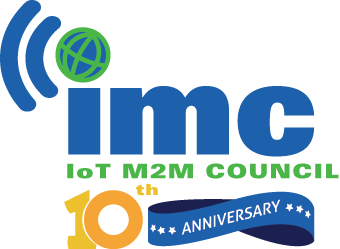Has the IoT proved itself to be pandemic proof?
- September 2, 2020
- Steve Rogerson

IMC executive editor Steve Rogerson speaks with Sam Colley (pictured), CEO of the Pod Group, about how the IoT market is surviving the upheavals of 2020.
When the pandemic hit and the world went into lockdown, quite a few companies behaved liked rabbits dazzled by car headlights. But nobody can stay in the middle of the road forever – you either get squashed or you make a dash for the side.
There is no doubt that some companies have been flattened. There are shops that will never open again, firms that have gone to the wall. But for most, they have adapted to a changing world and just got on with it.
I discussed this with Sam Colley, CEO of the Pod Group, a specialist in IoT SIM cards and connectivity, who believes the world is at an interesting stage at the moment with a mix between a slight slowing and big downturns depending on the vertical. But most see this a temporary situation.
“It is more of a pause,” he said. “People are looking at other ways to do business. Things are being delayed rather than cancelled.”
Retail, he said, was one sector that was hit hard, with shopping malls and stores stalling on installing PoS applications and digital signage, but even here there have been opportunities actually caused by the pandemic such as remote temperature checking devices to spot potential illnesses among shoppers.
“There are opportunities from the changing environment,” he said, “but the initial impact was hard on retail. Bars and restaurants all saw an off-the-cliff drop off. These are coming back up with new applications for social distancing and so on.”
The supply chain is an interesting sector because that affected the IoT industry as well as benefitting from it. At the time of the initial lockdowns there were supply chain problems particularly in getting hardware imported to the USA from China and Asia in general.
“There were delays in hardware deliveries from Asia,” he said. “China went into lockdown and that meant things were not being built. But now things are getting back to normal.”
As to the supply chain industry, goods were still being shipped, even from one side of America to the other.
“Supermarket shelves still needed to be filled,” Colley said.
He said the fleet management business was still going strong as a result and dashcams were becoming more important.
“These projects have continued because they are part of keeping the country going during a pandemic,” he said. “In supermarkets, we have one customer who does security for shopping carts. If they pass the perimeter, the wheels lock up. This is getting an uptick at the moment.”
Unsurprisingly, there have been big changes in the healthcare market with Colley seeing telehealth becoming the norm.
“That needs infrastructure to support it,” he said. “Plus, we are seeing more at home vital-signs monitoring.”
As to the future, nobody knows when this will be all over but Colley believes people are optimistic that it will be over at some point and they can return to a kind of normal.
“Some companies are in a holding pattern,” he said. “They want to keep their businesses going and be ready for rapid growth. And a lot of companies have taken this as an opportunity to digitise their businesses. They are looking a lot harder at IoT now than they were a few months ago. This will lead to market growth in twelve months’ time. It has been tough but the dust has somewhat settled and people are seeing it more manageable as we move forward.”
Though there were a lot of unknowns at the beginning, he said the IoT industry had shown itself to be somewhat pandemic proof, though not completely.
“The IoT industry is fairly resilient,” he said. “People are positive.”





